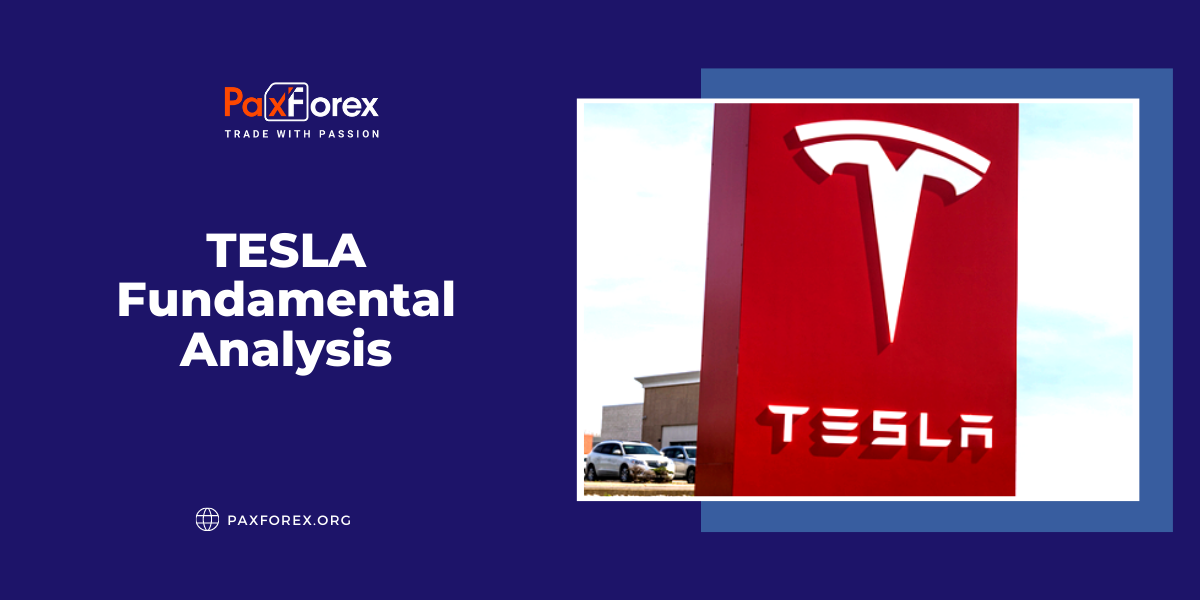
Source: PaxForex Premium Analytics Portal, Fundamental Insight
In the realm of business, it is uncommon for competitors to collaborate. However, a recent surprising turn of events occurred when Tesla, the prominent electric vehicle (EV) giant, and traditional automaker Ford, joined forces and stunned Wall Street with their partnership. This alliance entails allowing Ford customers to access Tesla's supercharger network for plugging in their vehicles.
The announcement emerged during a Twitter-spaces event where Ford CEO Jim Farley engaged in a conversation with Musk to discuss the electric vehicle industry. This collaboration is expected to bring satisfaction to Ford's customers, while also potentially benefiting Tesla's shareholders.
This development has the potential to establish a profitable revenue stream that could significantly enhance Tesla's financial resources. Here are the key details you should be aware of.
Electric vehicles bring not only a technological shift but also necessitate the establishment of charging infrastructure across the United States to support the growing number of EVs on the roads. Unlike refueling a car at a gas station, charging an electric vehicle requires compatibility between the vehicle's charging ports and the attachments at the charging station.
Tesla introduced its proprietary charging standard called the North American Charging Standard (NACS), which is employed in all its vehicles and charging stations in the United States and Canada. On the other hand, many of Tesla's competitors have adopted a different design known as the Combined Charging System (CCS) and consider it the industry standard for electric vehicles. However, given that Tesla has sold more vehicles than its competitors, who are still in the process of scaling up their production, the question arises: which design should be considered the true standard?
n an effort to enhance the experience for its customers and bolster its EV sales, Ford has made the strategic decision to leverage Tesla's well-established charging network. As part of their partnership, Ford will provide adapters that enable their current electric vehicles to connect with Tesla's NACS ports, instead of the CCS standard. This collaboration holds significant potential for the EV industry as a whole, as increased adoption of the NACS design would further solidify Tesla's position as a market leader. More vehicles utilizing the NACS standard would result in greater charging traffic for Tesla.
This move presents an excellent opportunity for Tesla to generate profitable revenue by attracting non-Tesla drivers to its charging network. Since Tesla has already invested substantial capital in building and expanding its charging infrastructure, any additional payments received from non-Tesla vehicles would largely contribute to its bottom line.
The exact pricing structure for Ford owners to use Tesla's network is yet to be determined, but there are some indicators. Tesla charges its customers based on kilowatt-hour usage, and non-Tesla users typically pay a premium compared to Tesla owners. Tesla also offers a monthly subscription option priced at $12.99, which reduces the kilowatt-hour rate to match that of Tesla owners. This could give us a ballpark estimate of what Ford users might expect to pay.
Currently, revenue from paid supercharging represents a small portion of Tesla's overall business, categorized under services and other in its financial reports. In the first quarter, this revenue segment amounted to $1.8 billion out of a total of $23 billion. Therefore, investors should not anticipate an immediate significant impact from partnerships like Ford's. However, the landscape can change as electric vehicles still account for just 1.5% of the global fleet, and revenue from services like charging has the potential to grow into a substantial category in the coming years.
The partnership between Tesla and Ford can be seen as a strategic move in the ongoing competition within the EV industry. As the industry is still in its early stages, with battles over industry standards and market dominance underway, it is crucial for investors to closely monitor Tesla's performance.
However, it may not be the most opportune time to purchase Tesla shares, considering their 66% increase since January. The company could be starting to feel the effects of an economic slowdown, leading analysts to revise their expectations for earnings growth. Additionally, Tesla's inventory has been accumulating each quarter, and price cuts have significantly impacted its operating profit margin, which declined by 779 basis points year over year in the first quarter. Furthermore, the current price-to-earnings (P/E) ratio of 58 might be considered too high.
Given Tesla's stock volatility, with a beta of 2, investors may find buying opportunities in the future. It is advisable to wait for such opportunities before making a decision to invest in Tesla shares.
As long as the price is above 200.00, follow the recommendations below:
- Time frame: D1
- Recommendation: long position
- Entry point: 220.69
- Take Profit 1: 235.00
- Take Profit 2: 255.00
Alternative scenario:
If the level of 200.00 is broken-down, follow the recommendations below:
- Time frame: D1
- Recommendation: short position
- Entry point: 200.00
- Take Profit 1: 190.00
- Take Profit 2: 180.00













